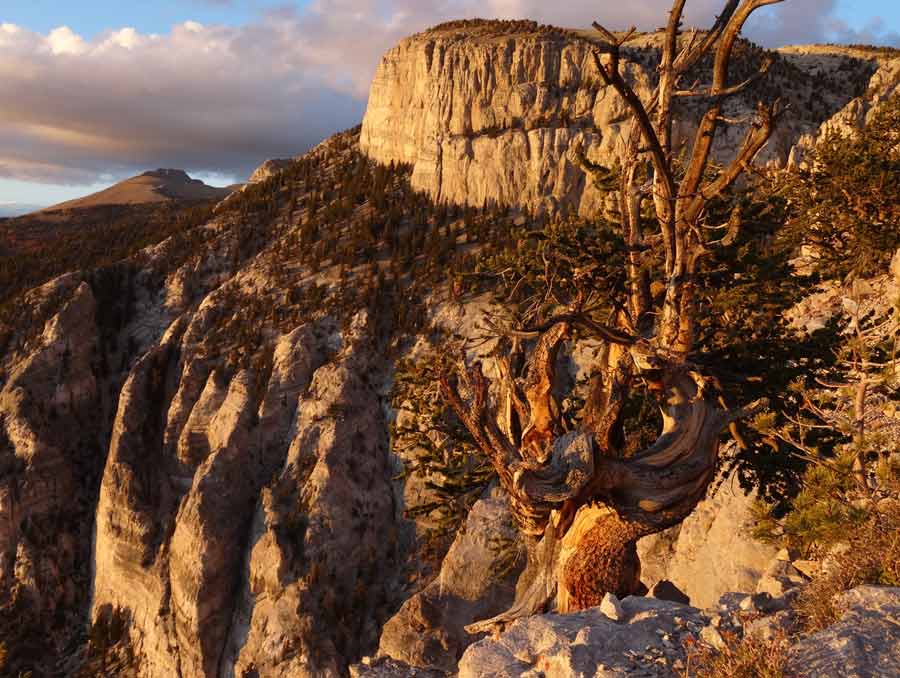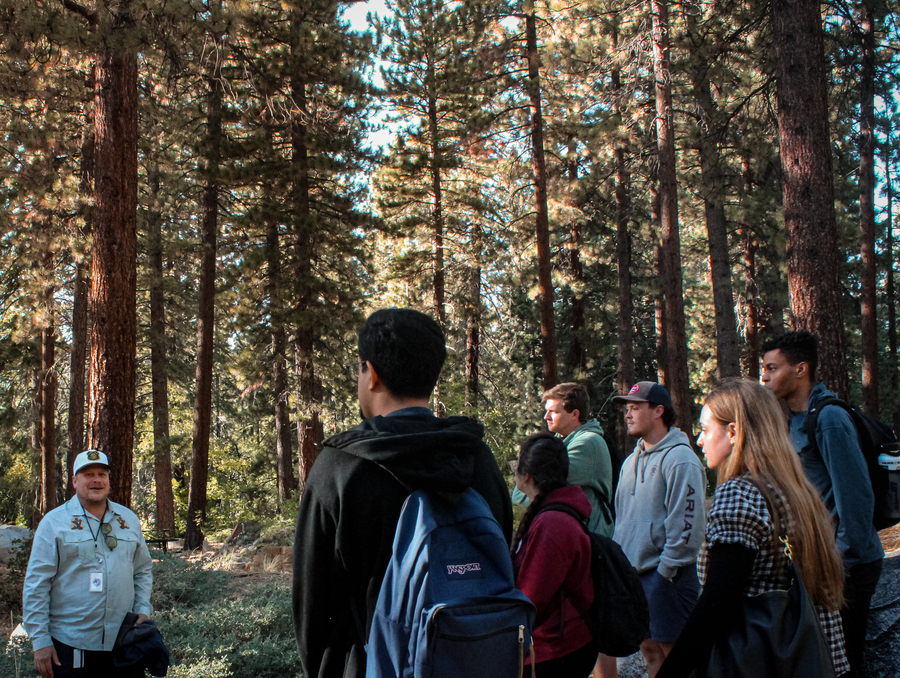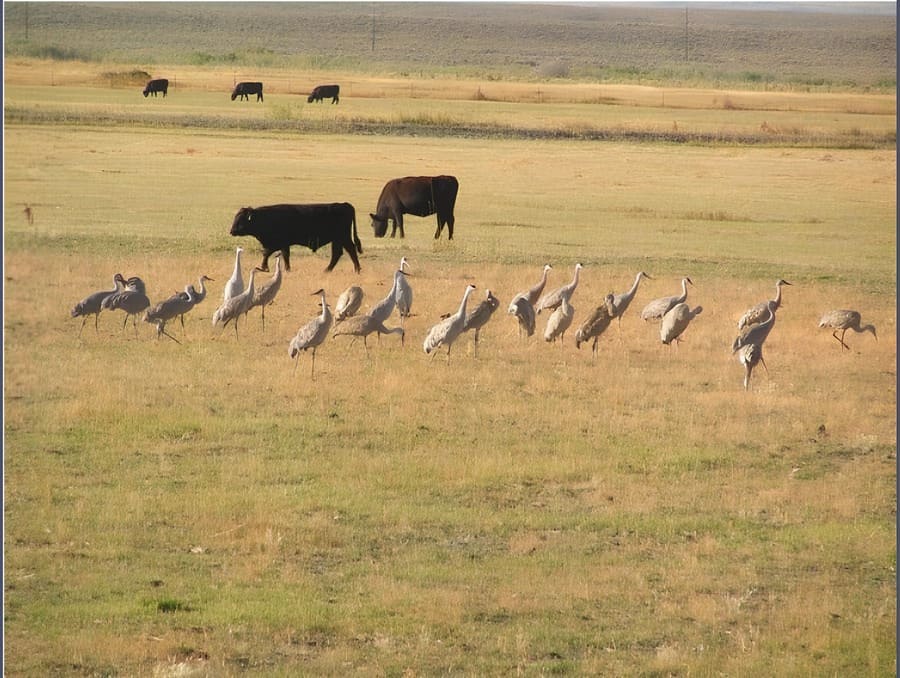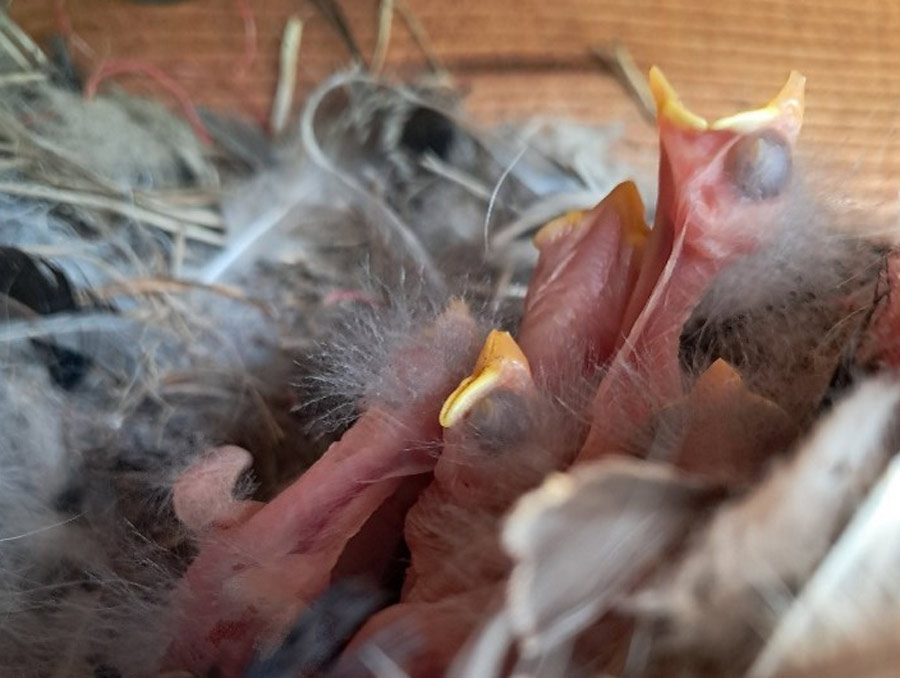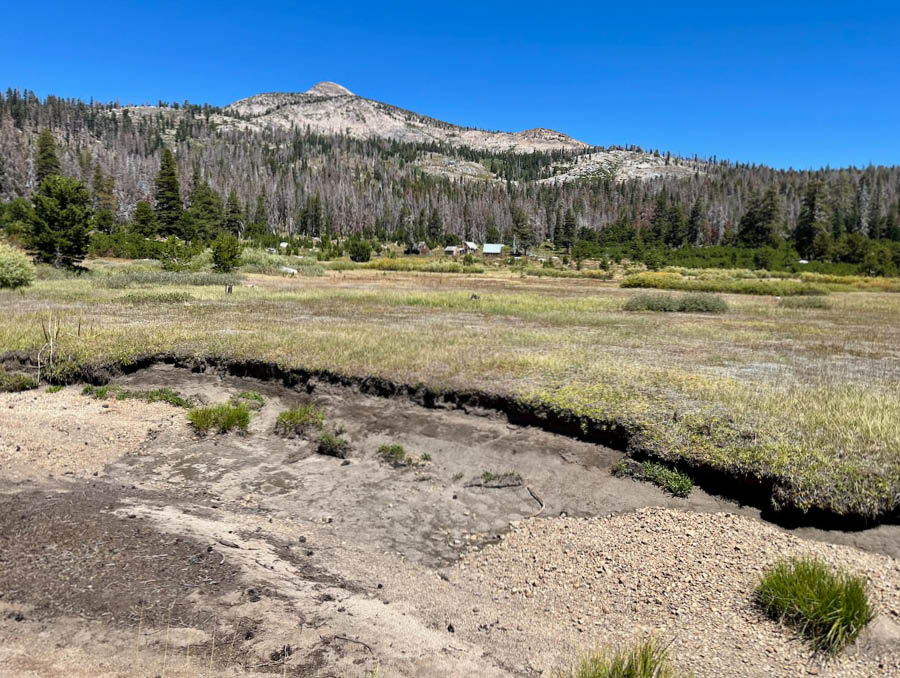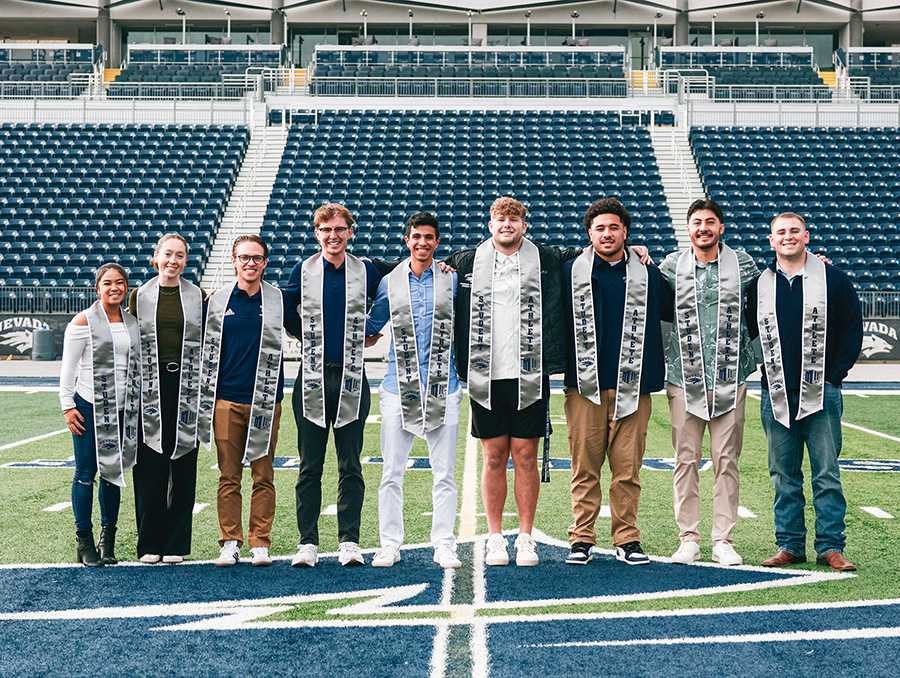A peculiar clock documents two kinds of passing time in the Nevada Museum of Art. The first is the one we are all familiar with, which dictates our lives from work meetings to workouts to cooking dinner: Coordinated Universal Time (UTC). The second kind of clock is ever-changing, sometimes moving more slowly and sometimes moving more quickly than the time we see on our watches: this is “Bristlecone Time,” a term coined by artist Jonathon Keats who conceptualized the clock.
Bristlecone Time is calibrated to the slow-growing Great Basin Bristlecone Pine, one of Nevada’s two state trees. These trees are the longest-living complex organisms on Earth and many of them reside in the Nevada Bristlecone Preserve on Mount Washington in southeastern Nevada. The Long Now Foundation, which emphasizes thinking about society and its problems on a much larger timescale, stewards the preserve and has used its long-lived residents as inspiration for some of its work, including the clock, titled "Centuries of the Bristlecone."
“To be sitting next to a tree that was … still growing back when the pyramids were built, is just always something that really is amazing,” dendrochronologist and associate professor at the University of Nevada, Reno Adam Csank said. Csank serves as a scientific consultant on the clock.
As a dendrochronologist, Csank studies how we can use trees to learn more about past environments. For Csank, the age of the bristlecone, the idea of using trees to understand the environment, the clock’s emphasis on rethinking our concept of time and the tree being an iconic part of the history of Nevada all being wrapped into one unique art exhibit is really exciting.
“One thing that I really love about dendrochronology is that it's actually a very accessible way to present the science of climate and environment to people,” Csank said. “It's a great public communication tool.”
The Nevada Museum of Art commissioned the clock to bring awareness to the environment. The piece is displayed prominently in the Nevada Museum of Art’s new Charles and Stacie Mathewson Education + Research Center. The clock’s gears are displayed in front of a photo of a bristlecone pine. "Centuries of the Bristlecone" marks the passing of UCT and Bristlecone Time on a large blue disk. The disks are designed to be replaced every millennium.
“It’s gorgeous, it’s amazingly well-made,” Csank said.
Along with the clock, another exhibit was installed on Mount Washington: a series of brass survey markers that mark the growth of bristlecones for the next 5,000 years.
The project took nearly a decade to come to fruition, partially due to the challenging mechanics of building a clock that records two speeds.
“One thing I thought was kind of interesting when I got involved in this project is … it kind of fits with the idea of slow science, the idea that everything kind of builds in iterations and you can move things incrementally forward,” Csank said. “But then in the end you might get somewhere cool, like the clock.”
University alumnus and graduate faculty member Scotty Strachan (B.S. Geography ’01, M.S. Geography ’11, Ph.D. Geography’ '16) works closely with the Long Now Foundation as a science advisor and has been part of the group working on the clock since its inception. That group includes Keats, clockmakers Phil Abernethy and Brittany Nicole Cox, the Long Now Foundation, and Csank.
Other scientists at the University have also studied the bristlecones in the Snake Range. Scott Mensing, professor emeritus in the Department of Geography, collaborated with several faculty members at the University, DRI, and UNLV from 2009-2014 on the installation of climate and ecology monitoring stations that span all elevations of the mountain range. Strachan served as the project coordinator and led the site design and construction teams, working with the Long Now Foundation to ensure that a range of long-term science and art projects could be enabled by the new stations. As part of his Nevada System of Higher Education role leading regional science and technology projects, Strachan has continued to maintain the stations with DRI colleagues, collecting continuous monitoring data from the Snake Range and enabling new research projects by students and other collaborators by publicly sharing the data.
Strachan has helped the clock project team with the initial scientific design and tree sampling, but recommended that Csank be brought in as the project's consulting dendrochronologist in order to more closely tie the collaboration to a University laboratory. Csank helped the clockmakers determine the speed at which the clock should move, and has established the scientific protocol to adjust this over time in response to long-term climate fluctuations.
Although it can at times be more complicated, in most cases the age of trees can be determined by counting the number of rings in a cross-section. In years with optimal growth conditions, the rings will be wider. In more challenging years, the rings will be narrower, indicating less growth. Csank calculated an average growth increment from the tree ring widths from the core samples collected by Strachan.
“We gave that number to the clockmaker, and the clockmaker was then able to set the mechanism so that at the end of one year, the etching that the clock etches on a glass disk will have moved by that amount of millimeters,” Csank said.
Csank has also floated the idea of feeding the clock climate data, so the growth rate is informed by measures of temperature, rainfall and more. Over the years, as the climate varies, growth rates for the Bristlecone pine will change, and may accelerate with ongoing climate change. Csank and future dendrochronologists will advise clockmakers on how to adjust the clock accordingly.
“You'll see essentially tree rings being produced in real time but on glass discs as part of the exhibit,” Csank said. “It's just amazing.”
The average growth rate provided a useful stating point for the project, but Csank plans to continue working with the clockmakers to more accurately reflect the growth rates of the trees.
“A tree is not going to grow at a constant rate throughout the year,” Csank said. “It's going to grow faster in the spring when it has access to all the water. It's going to slow down as we get into the fall, and it's probably going to stop growing in October, so the clock would pause at that point.”
Csank is curious to see how the bristlecones on Mount Washington will adapt to shifts in the local climate. Great Basin bristlecone pines aren’t currently listed as endangered, but their habitat is changing due to a combination of climate and disturbance factors such as drought, wildfire, and insect outbreaks. The trees grow in isolated populations, typically at mid-to-upper elevations in several regional mountain ranges. As the climate warms, species that may not have been able to survive at the elevations where bristlecones thrive may be able to occupy those habitats, potentially increasing competition for resources.
“They’re very slow growing, as anything is that’s long-lived,” Csank said. “They’re also not as quick at moving up in elevation, and then you’re going to hit a limit at some point, you can’t move any higher.”
But Csank also noted that the trees lived through the mid-Holocene warm period, when temperatures were also above pre-industrial temperatures.
“There is evidence that these trees did deal with [warmer] conditions,” he said. “The question is, at what point are we going to be beyond the threshold of what bristlecone may have experienced in their really long lives?”
However, ongoing recovery from a wildfire on Mt. Washington over 20 years ago demonstrates that bristlecone seedlings are successfully driving forest regeneration across nearly 2000 vertical feet of elevation in the mountain range.
"This goes to show that if we wish to truly understand real climate-ecology dynamics, we need to invest in high-quality, long-term scientific observatories that transcend human generations, much like the concept of the Centuries of the Bristlecone Project," Strachan emphasizes, "Nevada has very few of these, and the Mt. Washington partnership with the Long Now Foundation is uniquely valuable in this regard."
Csank has collected tree cores from many of Nevada’s mountain ranges but before last month, hadn’t yet been able to visit Mount Washington. In late-September, he visited the Nevada Bristlecone Preserve with the Long Now Foundation and Keats to collect additional samples.
“As with anything in science, with how trees are responding to environmental conditions, it has to be very local too, right?” Csank said. “This is one of the reasons why we need to go out to that site and make an installation, not an art installation, but a science installation there too. That's one of the things I think is also really cool about this, is that long term, there's going to be this amazing art [and] science project on display for the public to see in real time.”
